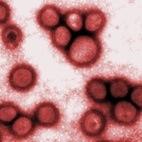Canine Health Information Center (CHIC)
The Board recently approved the participation of the CSPCA in the Canine Health Information Center program. Details of the program for our breed are given below. Overview CHIC is a centralized canine health database sponsored by the AKC Canine Health Foundation (AKC-CHF) and the Orthopedic Foundation for Animals (OFA). It was conceived in 1999 and became operational in 2001. Today there are 56 breeds involved through their parent clubs. Goals The goals of the CHIC Program are: To work with parent clubs to identify breed health issues and help to establish a central information system concerning these health issues. To...




